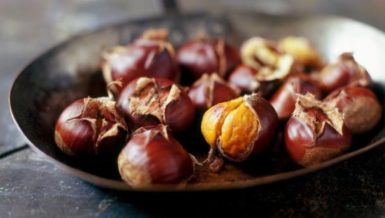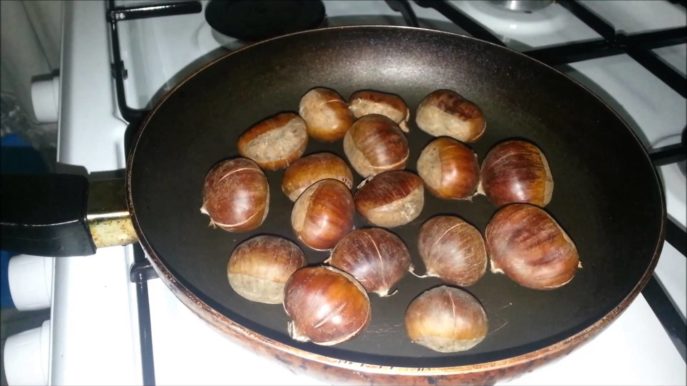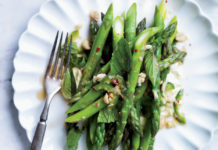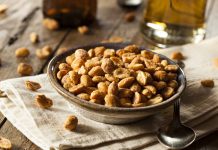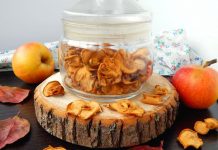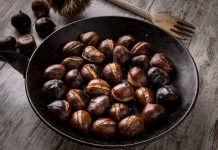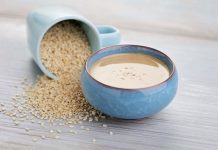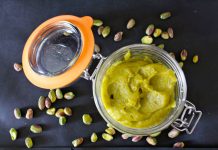The first to learn how to use chestnuts were the inhabitants of the Balkan Peninsula. Later, the culture of consuming these fruits spread to most of Europe, Asia and even North America. Today, roasted chestnuts are a fairly popular dish. True, for some it is a tribute to ancient traditions, while for others it is just an original dish.
Material Content:
The benefits and harms of roasted chestnuts
Those who have never tried chestnuts, the first thing you need to learn about them as much as possible. After all, not all products equally affect the human body. To begin with, it is worth noting that The benefits of roasted chestnuts have been proven for a long time.

Scientists claim that they:
- Due to the large amount of phosphorus and potassium in the fruits, they have a beneficial effect on bone and muscle tissues, as well as contribute to their rapid recovery.
- Improve the condition of blood vessels. With regular use of chestnuts, the development of varicose veins can be prevented.
- Due to the complex of B vitamins, they improve the general condition of the nervous system.
- Normalize blood cholesterol and prevent the development of thrombosis.
- Strengthen the immune system, increasing the protective ability of the body.
- Due to the content in the composition of water and healthy dietary fiber, they improve the functioning of the entire digestive tract.
- Relieve fatigue and increase stamina.
But roasted chestnuts at the same time can be harmful.
There are certain groups of people for whom these products are unsafe:
- patients with diabetes;
- those who have problems with the digestive system;
- people with poor blood coagulation;
- pregnant and lactating women, as well as children in whom this product may cause unwanted allergic reactions;
- people with kidney and liver diseases.
Before consuming chestnuts, they should always consult a doctor. Indeed, between the good and the harm there is always a very fine line.
Chemical composition and calorie content
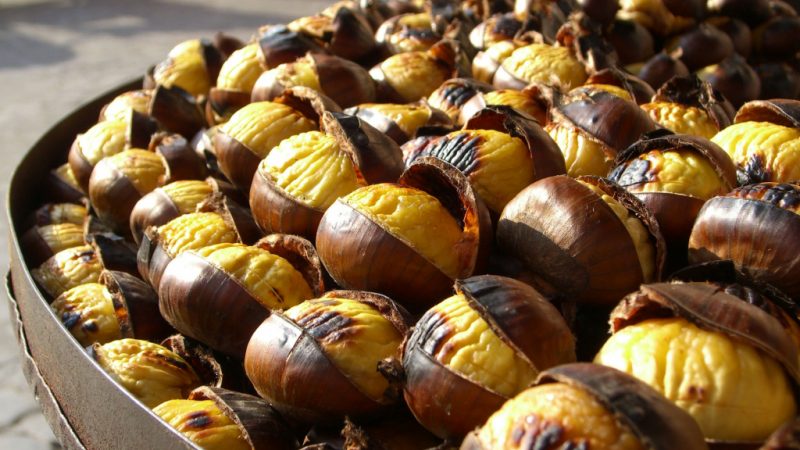
Given all of the above, it should be noted that roasted chestnuts are a very valuable food product, in 100 grams of which contains:
- 52.96 grams of carbohydrates;
- 40.48 grams of water;
- 3.17 grams of protein;
- 5.1 grams of dietary fiber;
- 2.2 grams of fat;
- 1.2 grams of ash.
Moreover, its energy value is 245 kilocalories. This is much more than fresh or steamed chestnuts.
In addition, the fruits contain a large amount:
- macrocells (potassium, sodium, magnesium, as well as phosphorus and calcium);
- trace elements (copper, iron, selenium, zinc, manganese);
- vitamins (A, E, C, PP, group B, K, beta-carotene);
- fatty and essential acids;
- Easily digestible mono- and disaccharides.
All this indicates the significant benefits of chestnut. But, as with any other product, one must be very careful with it.
What do roasted chestnuts taste like
To begin with, it is worth paying attention that in nature there are many varieties of chestnuts. But only 30 of them can really be eaten. The most popular is the seed chestnut.

It is one of the subspecies of the beech family. The tree reaches a height of 40 meters, and its fruits are nuts enclosed in a spherical spiny shell. What do roasted chestnuts taste like? This can be best described by the French. After all, it is in this country that such fruits are especially popular. Locals even consider them their national pride in the field of gastronomy.
According to ancient tradition, chestnuts are fried on the street. Their unique aroma creates a romantic areola and homeliness. The taste of chestnuts resembles a cross between an unroasted slightly sweet potato and nuts. Most often they are eaten just like seeds. In addition, fragrant and crispy chestnuts are used as an original addition to meat, vegetables and even prepare excellent salads, snacks or desserts with them.
Roasted chestnuts in a pan
Fans of experiments can try to cook these unusual nuts on their own. In principle, there is nothing complicated. How to cook roasted chestnuts at home? There are many ways to do this.
The easiest way to fry fresh chestnuts in a pan.
To do this:
- Sort the fruits, putting aside the spoiled and damaged. But sometimes a visual assessment is not enough. For greater certainty, chestnuts can be immersed in a container of water. For further work, it is better to use those fruits that are at the bottom.
- Wash them thoroughly with a brush and pat dry with a towel.
- Make cross-shaped incisions on the side of the shell with a sharp knife. This is necessary so that the fruits do not explode when frying.
- Pour the chestnuts into the pan and immediately put it on the fire. Cover the fruits with a wet towel. It is advisable that the pan has a thick bottom. Otherwise, the fruits will burn out.
- Cook over medium heat for 20 minutes under the lid. Shake products periodically so that they are well cooked on all sides.
- As soon as the skin of the fruits darkens, the napkin needs to be removed and heated a little for a couple.
Pour ready roasted chestnuts onto a plate and eat hot.
How to fry in the microwave
Modern housewives can cook European delicacies even in the microwave. It will not be difficult to do this.
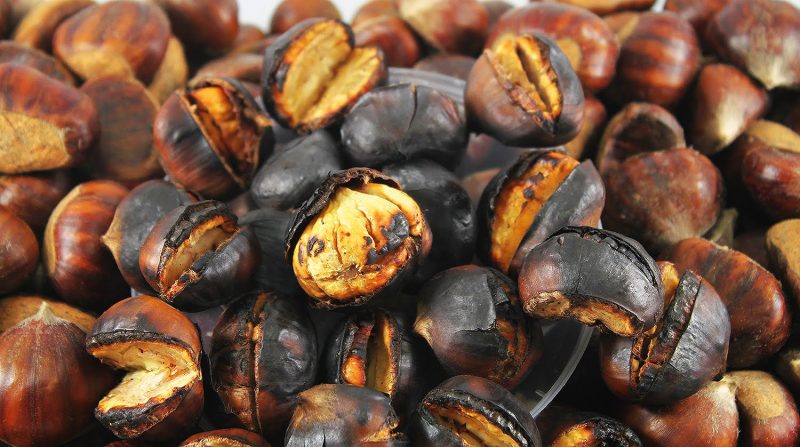
For this procedure, you must:
- Carefully sort out the chestnuts.
- Wash them thoroughly, removing the remnants of bitter veins, and dry them.
- Pour the prepared products into a shallow container, specially designed for use in the microwave.
- Sprinkle lightly with salt and add a little hot water.
- Cover the container with cling film and put in the chamber for 7 - 8 minutes. Cook roasted chestnuts at maximum power. For each microwave, it will be different.
During this treatment, the chestnuts are not only fried, but also steamed a little.As a result, the fruits are softer and more tender.
Cooking in the oven
Some housewives find it much easier to make roasted chestnuts in the oven. In part, this statement is true.
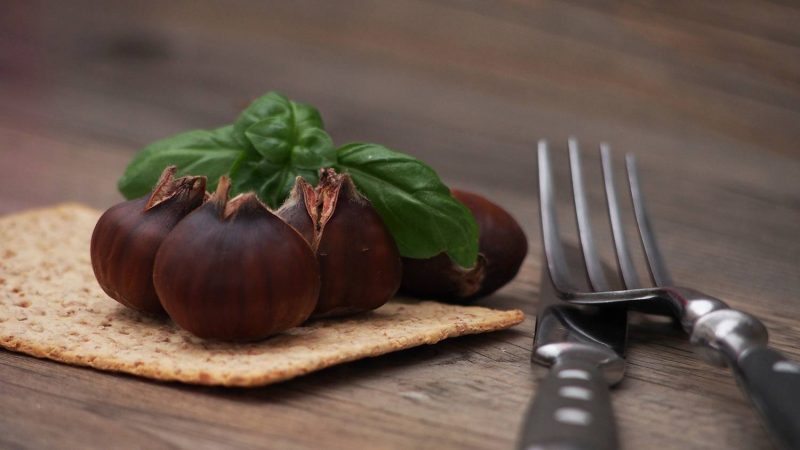
In this case, you will need:
- Select whole and high-quality fruits for work.
- Rinse well and dry thoroughly.
- On each chestnut, make a neat cut in advance. To do this, you need a sharp knife.
- Pour the fruits onto a baking sheet and lay them incised up.
- Preheat the oven to at least 220 degrees.
- Send a baking sheet with chestnuts into it and bake for about 25 to 30 minutes.
- Pour the finished fruits onto a towel, wrap and squeeze well. This is necessary so that the skin subsequently lags better. Leave them in this position for at least 5 minutes.
After that, chestnuts can be eaten immediately, enjoying their delicate taste and pleasant aroma.
Charcoal-fried chestnuts
If you recall a little story, then originally, people roasted the fruits of edible chestnuts on charcoal. In many regions of France, this tradition has survived to this day. You can repeat the old technique even at home. To do this, you will need to make a fire in the yard or use a regular fireplace for work. The technology of this type of frying differs little from the options already described above.
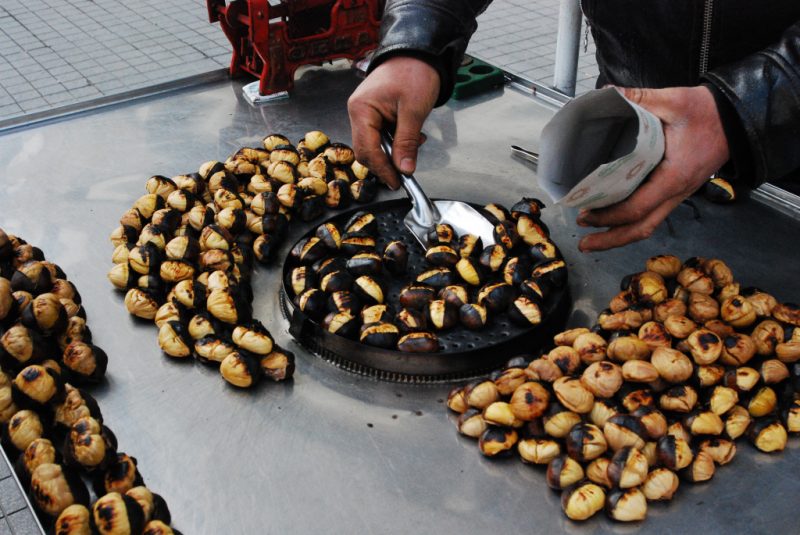
For this you need:
- Sort the fruits, putting aside those that are in doubt.
- Wash them and pat dry with a napkin.
- Make a small incision on the surface with a knife or just pierce them with a fork.
- At the same time you can make a fire. Wait until the wood burns well.
- Make a small depression in the coals.
- Put chestnuts in it and cover with coals on top.
- Wait approximately 10 to 15 minutes. Finished fruits will begin to “explode”. These claps will be the signal for the end of the process.
- Remove the fried chestnuts from the pit, transfer them to a wide dish and wrap with a towel. Under such a peculiar “fur coat” the fruits reach full readiness. This will take some time.
After, they can be safely cleaned and tasted. It is best to eat chestnuts while they are still hot. Cooled fruits, as a rule, lose their unique flavor.


